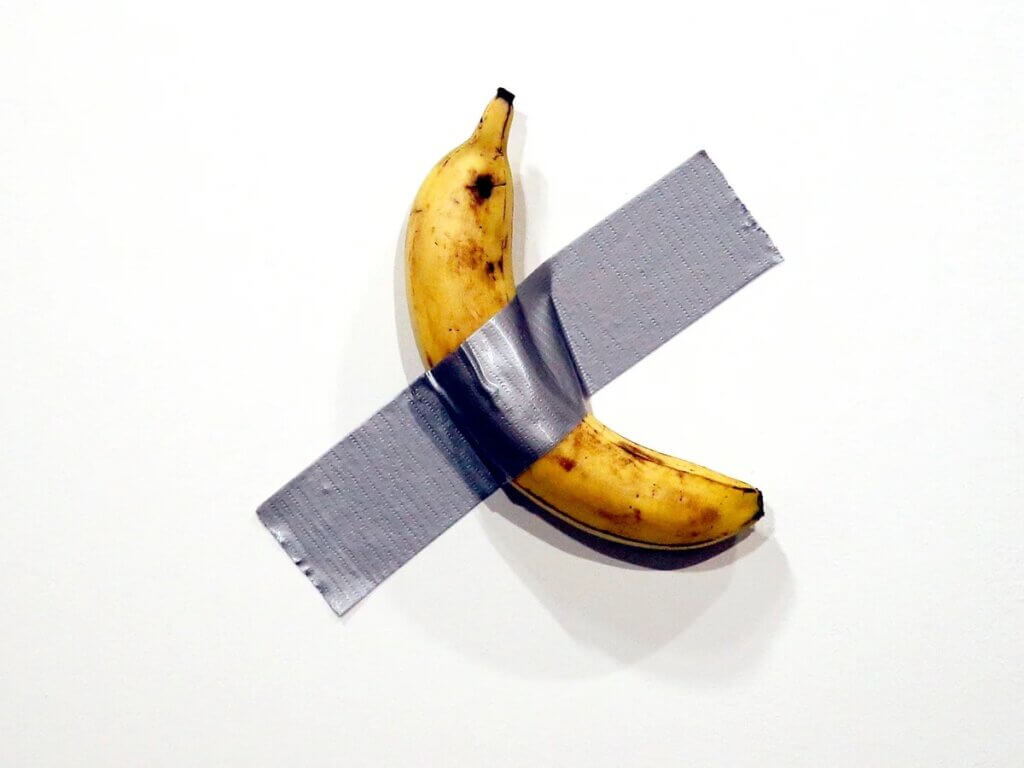Maurizio Cattelan’s “Comedian,” the infamous banana duct-taped to a wall, is one of those works that splits the art world down the middle, with critics, collectors, and the general public all clamoring to have their say. For some, it is a work of conceptual brilliance, a wry commentary on the art market’s excesses. For others, it is little more than an overpriced joke, the culmination of everything wrong with contemporary art. But beyond the memes and the headlines, “Comedian” is a multi-layered provocation that demands to be taken seriously, even if it simultaneously invites us to laugh.

At first glance, the artwork is simplicity itself: a real banana, bought at a grocery store, taped to a gallery wall with a strip of silver duct tape. It is transient, ephemeral, and absurd—three qualities that have defined much of Cattelan’s career. This is the same artist who presented a golden toilet titled “America,” inviting viewers to both marvel at and use it. In “Comedian,” the object itself hardly matters—in fact, buyers of the piece receive only a certificate of authenticity and a set of instructions on how to replace the banana every so often. This is art that dissolves its own physicality, where the banana is more of a placeholder, a concept rather than a fixed object. And that is, perhaps, the point.
The fact that “Comedian” sold for $120,000 initially and, in 2024, for a mind-boggling $6.2 million speaks volumes about the state of the contemporary art market. Here is a piece that has taken an everyday object, invested it with cultural and artistic capital, and then been propelled by the irrational forces of market speculation to an astronomical value. It is as if Cattelan, with a smirk and a wink, is holding a mirror to the art world and daring it to laugh at itself—or, more accurately, to pay to laugh at itself. The certificate of authenticity that comes with the purchase is the true artwork, and its value lies in the permission it grants to endlessly recreate the absurdity of the banana and tape. Cattelan is challenging us to recognize the extent to which we, as a society, assign meaning, and indeed value, to things that are otherwise meaningless. In this way, it is less of a critique of art itself and more of an elaborate parody of the economy of art.
Cattelan has always been an artist who uses humor as a weapon. His works—often provocative, sometimes puerile, always witty—serve to unsettle the complacency of the viewer. By forcing us to look at a banana and question whether or not it is “art,” he invites us to interrogate our own assumptions about what gives something value. Why should this banana be worth millions, when the one in your kitchen is worth pocket change? Why should a simple idea—a banana on a wall—hold more cultural significance than an intricate painting or a perfectly sculpted bronze? The answers, of course, are not in the object itself but in the performative rituals of the art world—the buying and selling, the certificates and gallery wall labels, the whispering awe of onlookers who wonder just what they are missing.
And then, there is the joke. There is always a joke with Cattelan. “Comedian” is, in part, a satire of itself—a joke about bananas, art, value, and, ultimately, about everyone who takes any of it too seriously. When David Datuna, an artist and prankster in his own right, famously walked up to the piece during Art Basel and ate the banana, he embodied the very spirit of Cattelan’s work: irreverent, confrontational, not quite willing to be pinned down. Datuna’s actions didn’t destroy the work; if anything, they completed it. Cattelan’s work is less about creating something stable and permanent and more about creating a situation—a situation in which anything could happen, including a man walking up and devouring the art in front of hundreds of stunned onlookers.
In the end, “Comedian” is an artwork that is difficult to categorize because it is intentionally evasive. It is not just a banana and tape; it is a critique, a provocation, a mirror, a joke, and a statement all rolled into one. It is about the instability of value, the artifice of art, and the absurdity of the systems that underpin our cultural economy. It is also, simply, about a banana—a piece of fruit that, by virtue of Cattelan’s imagination and audacity, became the most talked-about artwork of its time. Whether one sees it as genius or folly, “Comedian” demands a reaction. And in the world of contemporary art, that reaction—whether laughter, outrage, or confusion—is often the most important thing of all.























